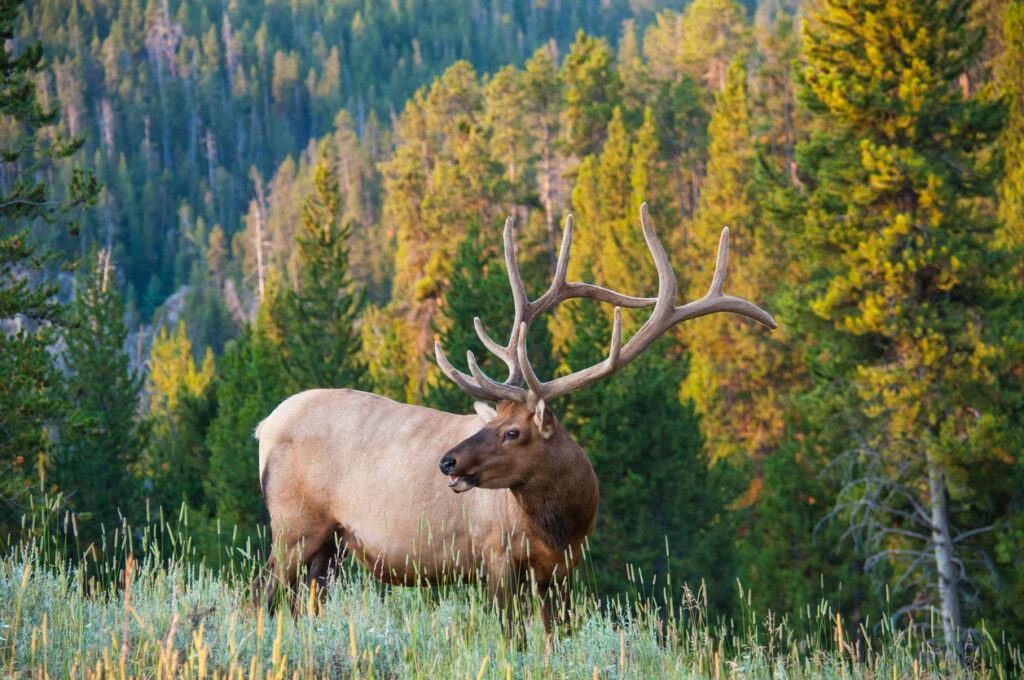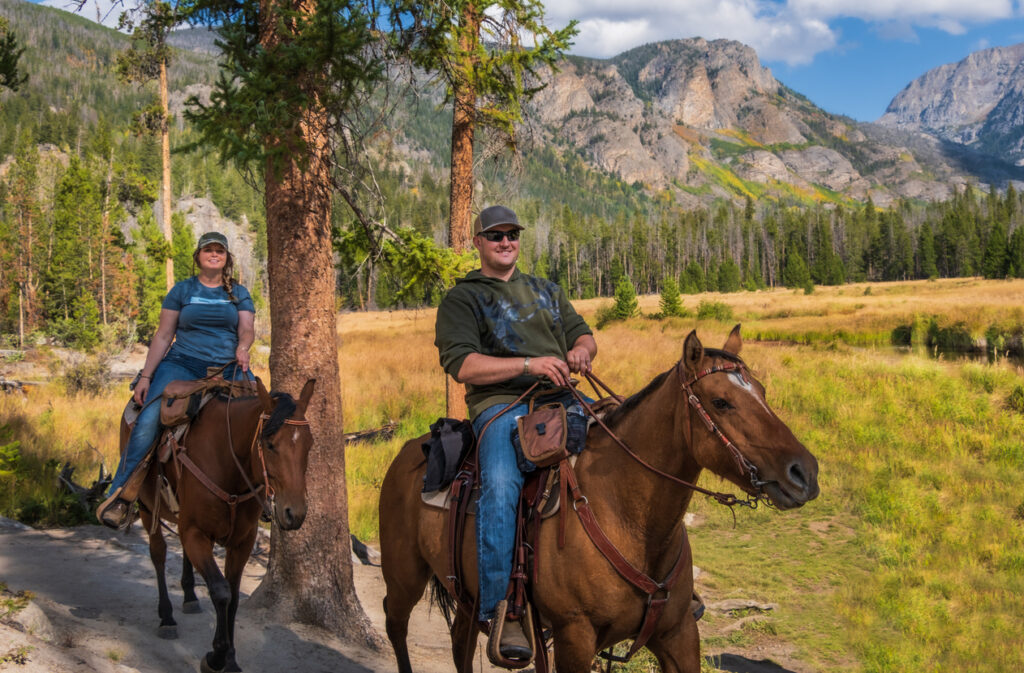When animal lovers venture outdoors, they’re always on the lookout for a glimpse of a bushy tail, a feathered wing, and curious eyes watching them while hidden behind the foliage. If that describes you, you’ll enjoy taking your love of nature to one of our largest national parks. Broaden your horizons by discovering the bountiful wildlife in Yellowstone.
This guide will let you know what to expect.
What’s the Best Time of Year to See Animals in Yellowstone?
The warmer months are among the best times to spot multiple species due to increased foraging, hunting, and calving. Consider swinging by between May and June, but there are unique opportunities throughout the year.
To find the best time to plan your trip, start with the park’s seasons:
- Summer increases your chances of seeing elk herds and foraging bears. You may also glimpse bighorn rams or otters.
- Spring is pretty cold in Yellowstone, so you may see bison herds traveling through the snow with their calves.
- Yellowstone is stunning in the fall. Elk and bighorn sheep activity heightens around this time, with migratory hawks also cropping up.
- Winter is one of the best times to see wolves in the park as they track the local elk populations. Keep an eye out for mule deer and foxes.
Must-See Mammals: The Stars of Yellowstone
When people think of Yellowstone National Park, certain animals spring immediately to mind.
Thanks to concentrated conservation efforts, visitors might see lone gray wolves or wolf packs roaming throughout the park. They’re active during dusk and dawn (with heightened activity in the winter).
American bison are another popular draw due to their sheer size and curving horns. The recent bison population increase further boosts your chances of spotting one grazing or wandering near trails.
Lastly, bears are some of the most striking wildlife in Yellowstone, whether it’s the smaller black bear or the massive grizzly.
Birds of Yellowstone
Birdwatchers will enjoy a front-row seat to a massive variety of songbirds, birds of prey, and waterfowl in Yellowstone National Park.
Ospreys are striking birds known for their swift flight and brilliant white and brown feathers. They build nests throughout Yellowstone and can be spotted diving for fish around the park’s rivers.
Sandhill cranes are easy to spot for their tall, elegant forms and distinctive red head patch. They build nests during the summer and stick to the grasslands.
Mountain bluebirds are among the easiest to spot because of their bright blue coloration. They crop up frequently in the springtime and have a call that sounds like tew-tew-tew.
Where to See Wildlife in Yellowstone
Hayden Valley is one of the best places to see wildlife in Yellowstone. You might see bears, wolves, and bison. While there’s no off-trail travel, hiking trails make it easier to sightsee from a safe distance.
For a mixture of famous landmarks and wildlife, visit Old Faithful. Not only does this geyser erupt every forty-five minutes to two hours, but this area frequently sees bison and elk.
Lamar Valley’s winding river attracts several species for a drink, including pronghorn sheep, mule deer, coyotes, osprey, and bald eagles. If you’re patient, you may even glimpse one of the local Lamar Canyon wolf packs. Lamar River is also a popular fishing spot.
Tips for a Safe and Responsible Wildlife Adventure
Whether you want to enjoy the park by horseback or get some exercise on a hiking trail, all visitors need to respect the rules. This park is a protected area that requires caution to ensure wildlife in Yellowstone can live in their habitat undisturbed.
Remain at a Safe Distance
Make sure you never follow around wildlife in Yellowstone to get a closer look or take a picture. Bring a pair of binoculars or a telescope with you to view animals at a safe distance.
Don’t Forget a Camera with a Zoom Lens
Without a zoom lens, you could miss out on unforgettable sights. This tool makes it easy to take candid snapshots at a great distance.
Review Best Practices for Viewing Wildlife When Rafting or Hiking
Do you plan on doing a little rafting or hiking? While hiking, stay at least 100 yards away from bears and wolves or 25 feet from other animals. Rafting in Yellowstone is best done with a seasoned guide familiar with the river and its wildlife.
Discover Yellowstone Wildlife with Wild West Rafting
We offer exciting guided rafting trips to help you have fun, stay safe, and discover local wildlife near Yellowstone. Our program provides you with the gear and safety information you need so you can focus on having the time of your life.
Ready to enjoy the best places to see wildlife in Yellowstone? Book your trip with Wild West Rafting today!
Have questions? Reach out so we can talk about your upcoming adventure.




